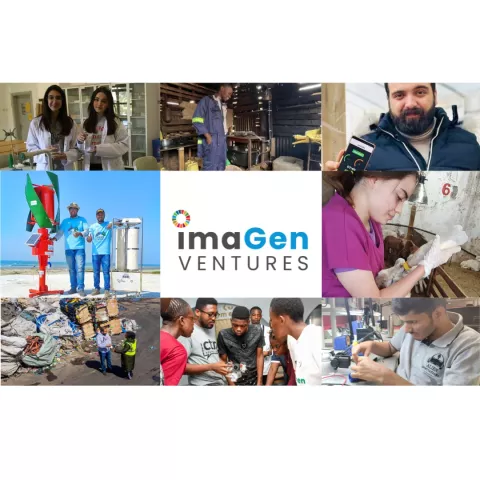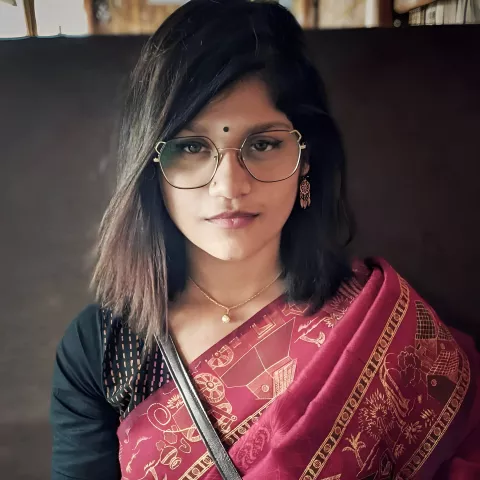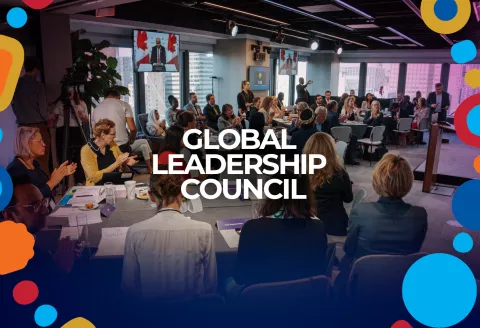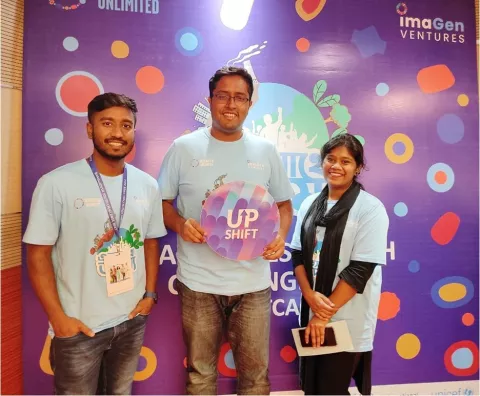Adolescents with special needs in Bangladesh share pursuit of their dreams
New programme is providing skills, training and equipment
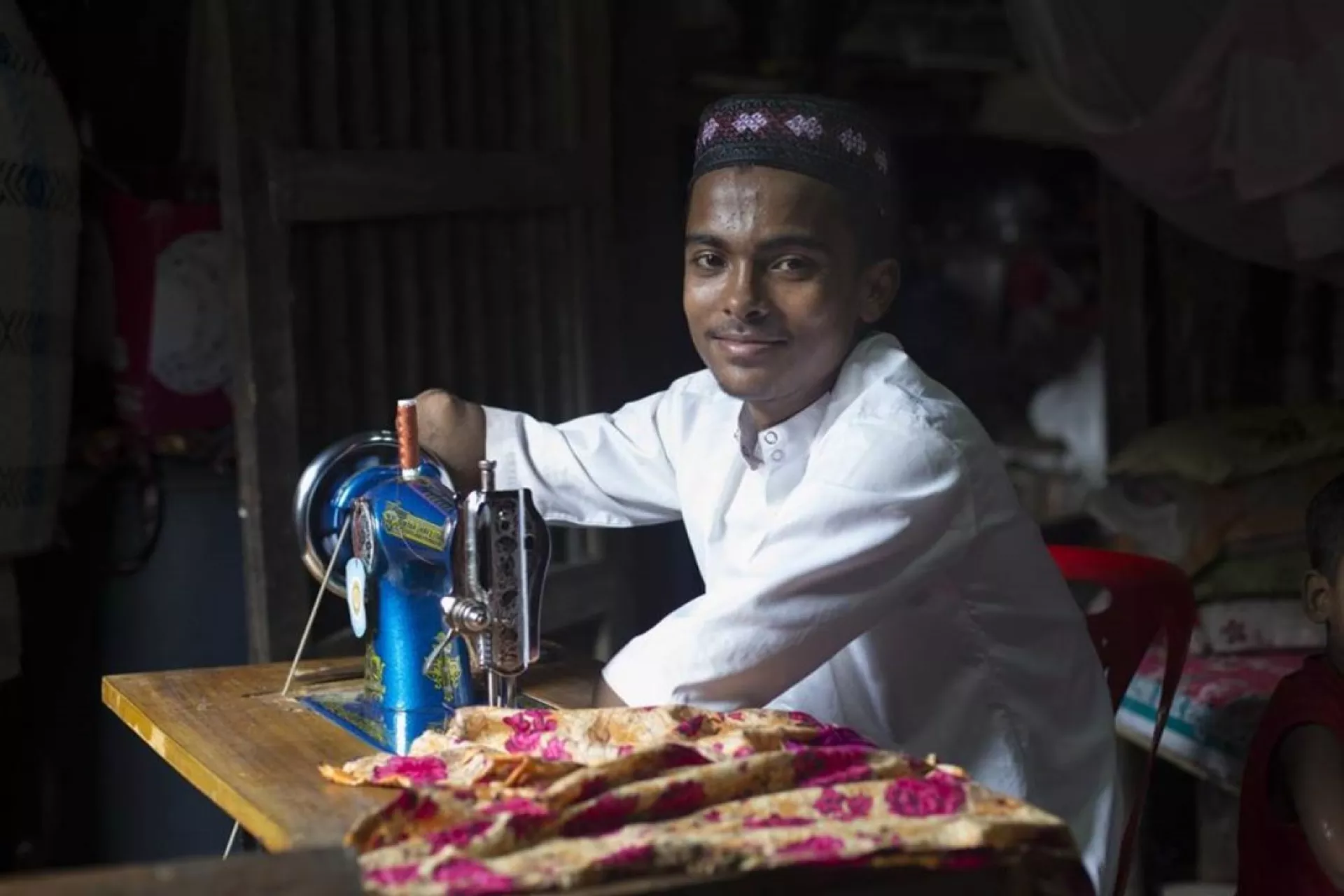
Bangladesh is home to more than 45 million youth aged 15–24 years with unlimited potential to bring about positive change.1 But nearly 30 per cent of this youth population are not in education, employment or training.2 With the strong support of the Government of Bangladesh and partners across sectors, GenU Bangladesh was launched in 2019. As one of the GenU ‘accelerator countries’, Bangladesh is making good progress towards its ambitious goal of skilling and connecting 17 million young people to livelihoods and active citizenship opportunities by 2025, including the most marginalized.
While innovative solutions, such as the Alternative Learning Programme implemented by BRAC and other partners with support from UNICEF and the International Labour Organization (ILO), are accelerating efforts at scale, other crucial programmes also help to ensure that marginalized youth in Bangladesh have equal opportunities to fulfil their full potential in life and work.
For example, it is estimated that 7 per cent of children under 17 years of age in Bangladesh have one or more disabilities.3 Despite the progress made to strengthen inclusion of youth with disabilities, this figure represents a significant number of children and youth facing stigma and discrimination that will prevent many of them from fully participating in education and skills development, employment and livelihood, as well as civic engagement opportunities.
Against this backdrop, Protection and Empowerment of Children with Disabilities Project with NGO Centre for Services and Information on Disability (CSID) through UNICEF Core Funds and European Union support to improve the outlook of adolescents with disabilities by providing them with 36,000 taka (approximately $418) in cash over 18 months to invest in setting up a business or gaining vocational skills. The programme also provides counselling, medical referral, and special support devices. Through the multi-year Child Protection programme, it aims to reach more than 1 million young people including those with different abilities. To date, the programme has touched the lives of more than 500,000 young people through community outreach, child protection hubs and adolescent clubs.
For Omar, a programme participant who has always loved fashion, the initiative has meant that he is able to pursue his dream of becoming a tailor. The programme provided him with sewing skills training and equipment. The 15-year-old, who already has a few customers, seems happiest at his sewing machine as it thrums and whirrs while he works on his creations.
“I want to do something big by acquiring the skills of design. There are very beautiful designs,” says Omar, describing the elaborate necklines and sleeves that he has seen. “I actually like these designs. So, I wanted to learn sewing.”
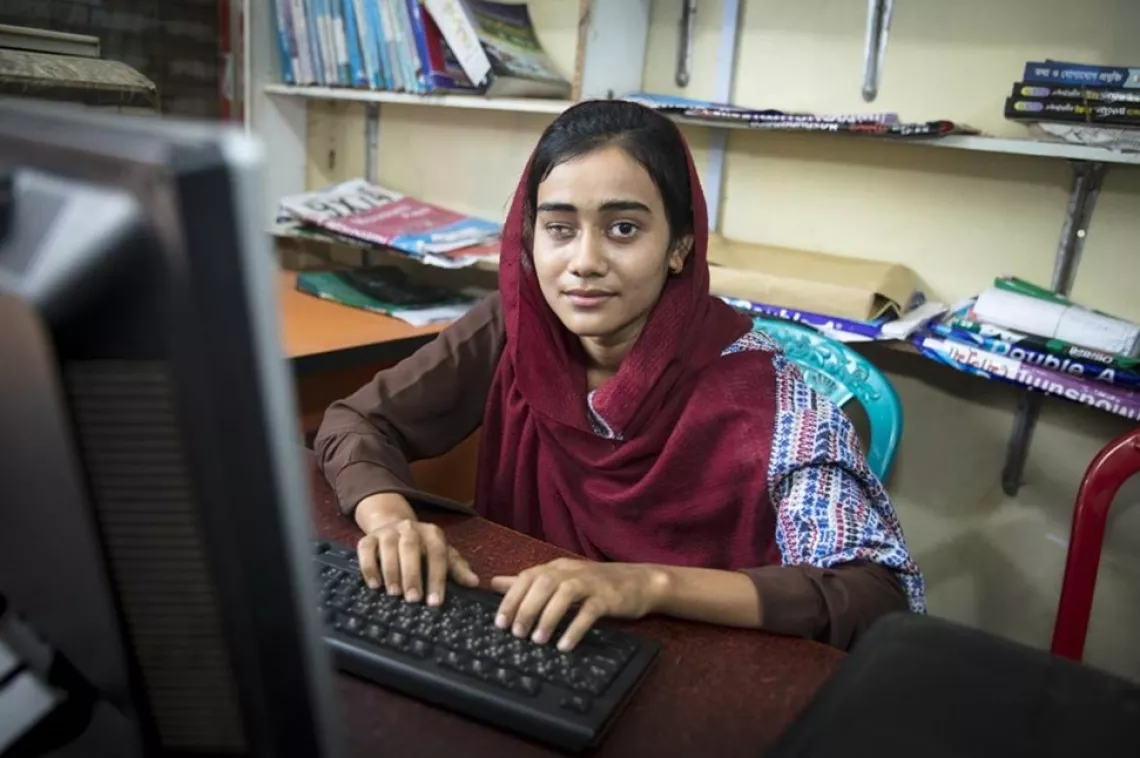
Omar was a young boy when he was electrocuted and injured in an accident. The doctors could not save his hands and forearms, which were amputated after infection set in. He spent three months in hospital recovering from the surgery.
“Initially, it was painful. I could not work at all, but I kept trying,” he recalls. The same determination drives Omar today. He manages his daily tasks on his own and does not ask for help. He also loves to play football and badminton with his friends – just like any other teenager.
Another adolescent whose horizons have widened thanks to the programme is Nupur. The 17-year-old opted for computer skills training with the conditional cash transfer that she receives. She can imagine herself working in an office one day, putting her graphic design, Adobe Photoshop and Microsoft Excel skills to good use.
“I felt so good to have learned these skills. I can do something by using the skills in the future,” says Nupur, adding that she believes her learning will eventually win her respect from people who only see her disability, and not what she can do. Nupur, who has a visual impairment, has heard plenty of unkind remarks about her disability, usually from women – complete strangers – whom she passes on the street.
“The women say that she is disabled, does not look nice, how will she be married off, or what will she do in the future to survive,” says Nupur. “But I don’t worry about this. I believe if I can do something, then they will automatically like me … if I can stand on my own two feet.”
Natalie McCauley, Chief of Child Protection at UNICEF Bangladesh, sums up the importance of the programme: “Like every child in the world, children with disabilities have the right to be nurtured, supported and encouraged to realize their full potential. Developing their skills and providing investment so they can earn an income of their own can mean the difference between a life of exclusion and isolation and a life of participation and connection.”
1 United Nations Department of Economic and Social Affairs, ‘World Population Prospects 2022’, UN DESA, <https://population.un.org/wpp>, accessed 16 August 2022.
2 International Labour Organization, ‘Youth Labour Statistics’ (ILO STAT), ILO, <https://ilostat.ilo.org/topics/youth>, accessed 16 August 2022.
3 Grimes, P., et al., Disability-Inclusive Education Practices in Bangladesh, United Nations Children’s Fund Regional Office for South Asia, Kathmandu, 2021. Available at: <www.unicef.org/rosa/media/16986/file/Country Profile - Bangladesh.pdf>, accessed 16 August 2022.

